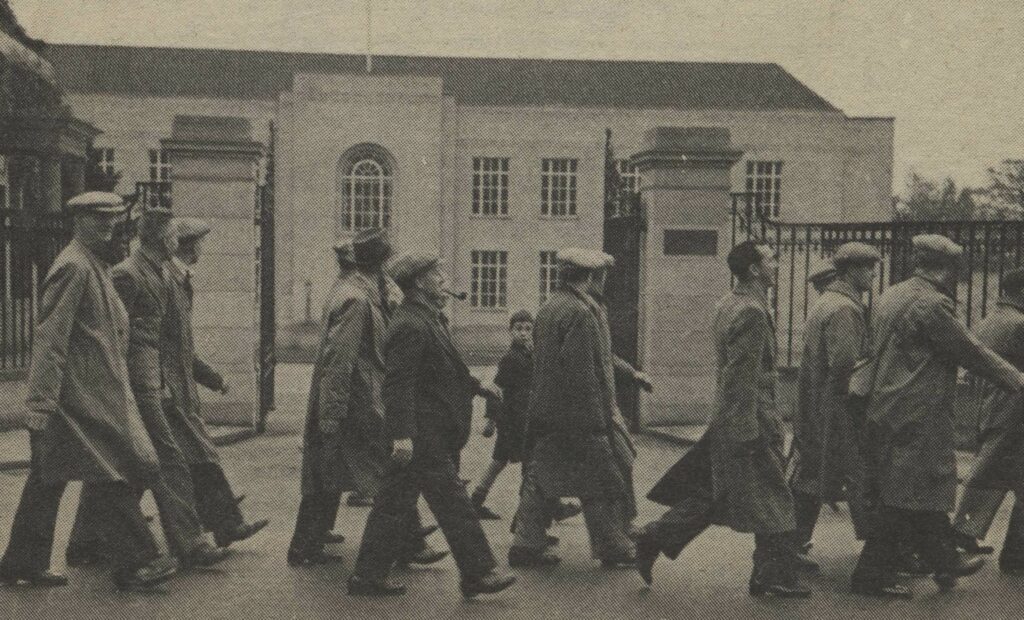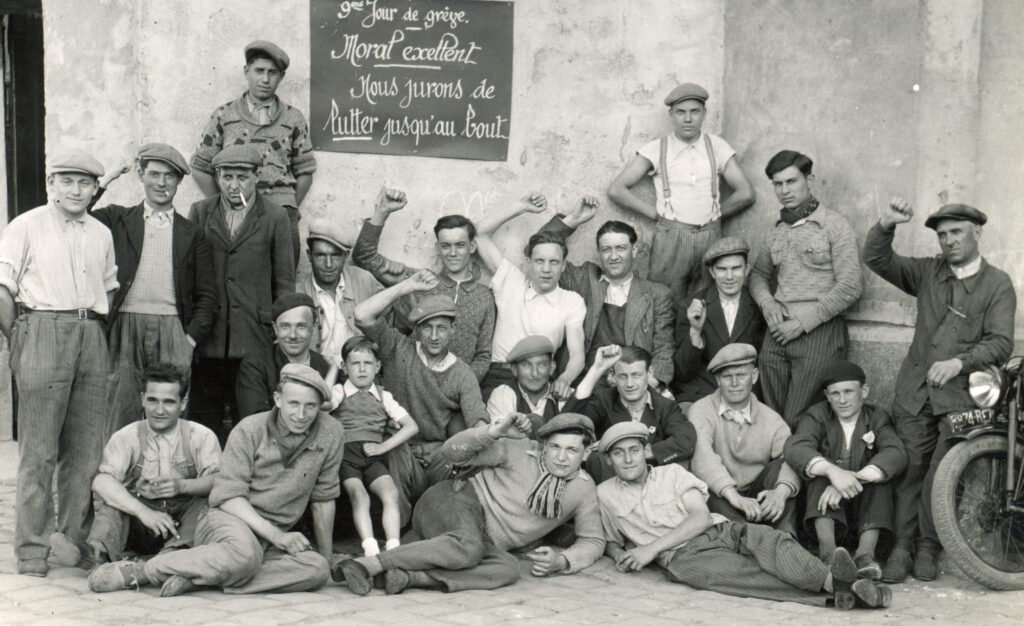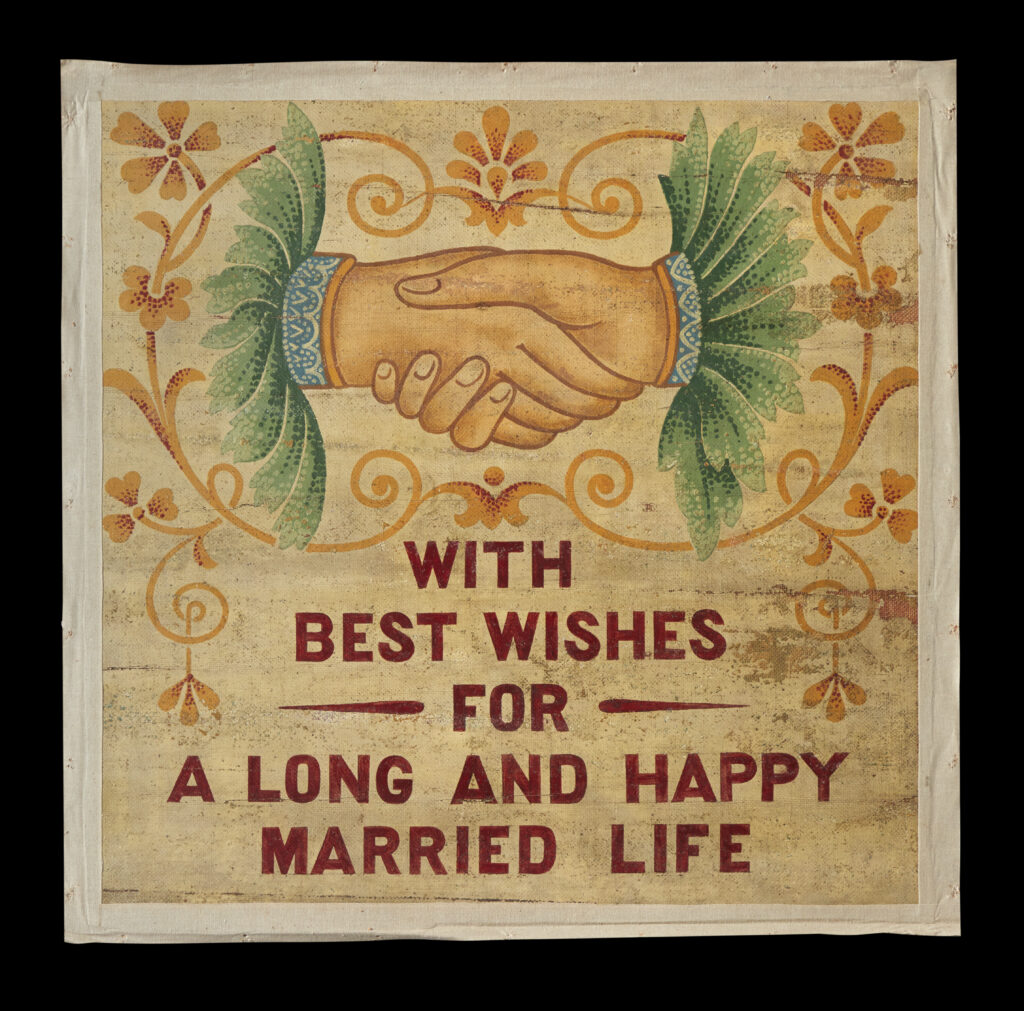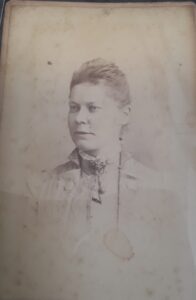
JANE CALVERT DUNCANSON, 1854-1945 – A DUNFERMLINE BLUESTOCKING.
(With a note on the degree of LLA).
The term bluestocking was first used in the 18th century for ladies who gathered in groups for intellectual conversation and was extended to educated women generally, sometimes in a derogatory fashion. It probably stemmed from the blue hose worn by working people which was regarded as eccentric when worn in polite society. Jane Duncanson, who was early in the field of advanced education for women in Scotland, may well have been regarded as a bluestocking by her contemporaries in Victorian Britain.
Jane Calvert Duncanson was born in the Parish of Inverkeithing on May 13th 1854, the first of the seven children of Thomas Duncanson, a mason and master builder, and his wife Elizabeth Milburn from Cumberland. The Duncansons lived successively in New Row, Campbell Street and 10 Appin Crescent, Dunfermline.
Jane seems to have been a clever and ambitious girl set on a career in teaching, with a leaning towards science. Educated locally, by the age of 16 in 1871 she was employed as a pupil teacher and was taking French lessons in Edinburgh. In 1873 she began a teaching course at the Edinburgh Free Church Training College, doing her probationary training at St. Leonard`s Works School in Dunfermline. From 1874 until 1889 she sat numerous examinations under the auspices of the Privy Council Committee on Education in London, the Normal School of Science in South Kensington and other bodies. Among the subjects she studied were education, French, mathematics, botany, animal physiology, inorganic chemistry, sound light and heat, physical geography, political economy and hygiene for which she was awarded a medal.
In 1875 she obtained her Teachers Certificate Second Class, which in 1888, after years of service, was duly raised to First Class. In 1877 Jane`s success in French, English, Education and Political Economy gained her the qualification of LA (Literate in Arts) which had been established for women by St. Andrews University as the nearest thing to a degree. Jane was one of the first eight women to obtain this qualification. As there was already a LA qualification for men in Edinburgh, St. Andrews changed LA to LLA (Ladies Literate in Arts) which Jane obtained in 1884 with Education (Honours), Political Economy and French (Honours). In 1887 she added Botany with honours to her LLA qualification.
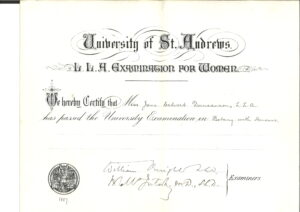

In 1881 aged 26 Jane was still living at home in Appin Crescent and working as a teacher. Her father Thomas Duncanson aged 51 was described as a master mason and quarrymaster, employing 33 men. Thomas died in January 1883, aged 53 having been 25 years in business in Dunfermline; his wife Elizabeth Milburn died in 1910, having moved next door to 8 Appin Crescent.
On September 10th 1887 the Dunfermline Press announced that at the `Dunfermline School of Science and Art – Miss J. C. Duncanson, LLA, will begin a class in Elementary Botany in the New High School Tuesday 20th September 6.30-7.45: fee for the course 10s`.
Apart from being a pioneer in women`s education, Jane adopted other modern ideas. She was a member of the Rational Dress Society (probably a protest against corsets and other restrictions) and in an advertisement for `reform cotton wool` in the Kilkenny Advertiser for June 1889 Miss J. Calvert Duncanson of Cardiff was said to have found the new fabric comfortable, elastic and easily washed
When she was about 36 Jane had moved to Cardiff and set up home with her younger brother John, an elementary school teacher. During her training Jane had studied French at a pensionnat in Paris and in 1890 she returned to visit Parisian schools to study their methods. At this time Jane was appointed headmistress of Cardiff Higher Grade School which was founded in 1885 to prepare children for entry to the University College Cardiff founded two years earlier She succeeded Miss Ramsay, probably another Scottish lady, who also had the qualification of LLA.
Jane was not long in her new post as in1891she married a Cardiff shipowner John Gower Marychurch who was one of Cardiff`s leading citizens and a foremost shipper of coal from Cardiff Docks. The 1901 census finds the couple living in Park Place Cardiff with Jane`s lady`s help, Lucy Grant, a cook and a parlourmaid. In December1909 John Marychurch died aged 70, bequeathing large sums to charity and leaving Jane a wealthy widow of 44.

Jane, seated centre, with her servants outside her Cardiff house
Jane was a woman of spirit. In March 1911, newly-widowed, she went as a tourist to Springfield, Ohio, travelling on the Cavonia to New York. She was described as aged 56, 5`4” tall with grey hair and eyes and a fair complexion. Her relative in the `old country` was given as her brother J. Duncanson of 8 Appin Crescent Dunfermline.
Jane then moved to Weston-super-Mare, Somerset, and in 1939 aged 85 was living there with her companion Lucy Grant and a maidservant. Jane died at Weston-super-Mare in November 1945 leaving the considerable sum of £6441:11s:10d. Cremation was not yet common but Jane was cremated `by her own wish` in Bristol. Jane Calvert Duncanson or Marychurch was a modern woman to the end.
THE DEGREE OF LLA (Ladies Literate in Arts)
In the 1870s there was growing demand from women keen to obtain an education and to improve their chances in life and evening classes in selected subjects began in Edinburgh. It is likely that Jane Duncanson attended some of these while she was a student from 1873-5 at her Edinburgh training college.
Enlightened men and women in St. Andrews took up the challenge and in 1877 introduced the Higher Certificate for Women, with a choice of 20 literary and scientific subjects, `to stimulate women in the pursuit of higher learning`. It would be of `great advantage to teachers and especially advantageous for those who can`t attend university but who aimed at advancement by private study` (Fife Herald, Dec. 28 1876). To obtain the diploma of LA (Literate in Arts) candidates had to pass four subjects, including a language and, as we have seen, Jane Duncanson was among the first eight women to qualify, passing examinations in French, Education, English and Political Economy.
From 1881 candidates had to have a Local Education Certificate; in 1883 the number of subjects was raised to five and in 1887 to seven. By 1886 there were 24 subjects on offer and the LA had become the LLA (Ladies Literate in Arts) to differentiate it from a degree of LA offered for men in Edinburgh. The LLA increased in popularity, especially after a lecture tour in 1887, and it existed until 1931 (Details obtained from a University of St. Andrews Special Collections Blog `Examinations for Ladies Literate in Arts, May 8 2019).


